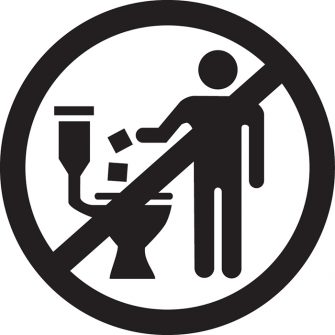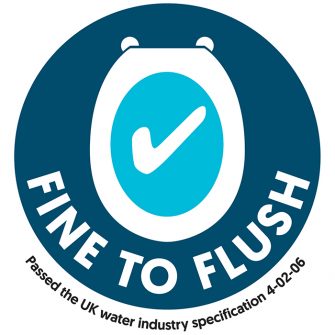The further development of plastic-free and flushable products will be key themes at INDA’s World of Wipes (WOW) 2020, which will now be an all-virtual event Aug. 24-27.
For my own presentation at the event, I provided the half-jokey title “London: Why do all the problems start in the pesky UK’s capital?” back in January.
After COVID-19, the issues it raises seem trivial somehow, as if they belong to a different era. Nevertheless, they remain to be fully addressed and resolved at some stage.
Essential tools
Single-use products in the form of facemasks and other items of PPE have proved to be essential tools for frontline workers in the fight against COVID-19 during 2020, while at the start of the pandemic – when consumers became caught up in a panic buying frenzy – packs of sanitizing wipes acquired the status of prized possessions.
Such was the clamor for them in UK supermarkets, that all single-use wipes were rationed for several weeks. This is ironic, given that an outright ban on them was announced by the UK’s government during 2018, only for the decision to be very quickly reversed.
Blue Planet II
The proposed ban was prompted by the response in 2017 to Blue Planet II, the nature documentary series on marine life, that was produced by the BBC in London and narrated by the naturalist Sir David Attenborough, gaining huge audience figures around the world and drawing necessary attention to the issue of marine litter.
Among other things, the blanket coverage of the problems caused by plastics following on from Blue Planet II built momentum for the European Commission’s Single-Use Plastics Directive.

No delay
Despite the urgency with which all countries have been pursuing single-use, plastic-based PPE in 2020, the European Union has ruled out any delay in the Single-Use Plastics Directive.
It will see action taken against 10 product categories based on the products most found discarded on European beaches, including disposable wipes, as well as nonwoven-based femcare items.
In July 2021 laws will come into force requiring such products to carry prominent warning labels and extended producer responsibility for their clean-up, collection from beaches and disposal will then come into place in December 2024.
A similar scheme planned for California – the California Circular Economy and Plastics Pollution Reduction Act – failed to gain enough votes last November but will be reintroduced later this year. Legislation is also being drafted in Canada and further multiple state and municipal initiatives are expected to be introduced across North America.
At WOW 2020, Richard Knowlson of RPK Consulting will provide the latest information on where regulation and legislation activities are today in North America and in other parts of the world.
In what is surely an unrelated development, but adds a further ironic twist, London-headquartered Water UK has now introduced the Fine to Flush label – a new official UK standard identifying which wet wipes can be flushed down toilets safely.
Raw materials
According to the current definitions of plastics, the following key raw materials are left to work with in order to avoid the EU’s single-use plastics legislation – wood pulp, viscose, starches, cotton, lyocell, cellulose derivatives, flax/hemp/sisal, etc., PHA and proteins.
“The good news, in respect of wipes at least, is that within this group of fibers there is a wide range of different functional products such as curly pulp, ultrafine fibers, treated fibers and those with modified cross sections and in addition, we are not starting from ground zero,” Knowlson has observed. “One of the major baby wipes grades in North America has been 100% plastic free for more than five years and all the products conforming to the industry’s Flushability Guidelines are now plastics free. In addition, a huge amount of work has been done to better understand how to open and process staple cellulosic fibers and new equipment has been designed to handle and dose specialty wood pulp grades and cotton linters.”
Natural blends
Cellulosic fibers are already widely employed in wipes, but where durability and other key properties are concerned, this has been generally in blends with synthetics.
At WOW 2020, Kay McCoy, technical sales representative for Pulcra Chemicals, will share the results of an investigation of the performance of novel fiber and fabric treatments on 100% cellulosic nonwoven wipe fabrics.
“It’s clear that 100% cellulosic fiber webs are gaining market interest to replace synthetic fiber webs for a more natural, biodegradable material and the planned legislation against traditional plastic-containing materials,” she says. “There is, however, a question of how the different properties of 100% cellulosic fiber webs impact the final product performance compared to synthetic fiber web blends. Fiber finish or post web treatments could potentially change the performance of the cellulosic webs to obtain properties similar to the synthetic fiber web blends, but with an improved environmental profile.”
What is plastic?
The widespread replacement of synthetics by cellulosics, however, assumes they will escape being classified as plastics.
There was alarm earlier in 2020, when a study “What is Plastic?”, published by the London-based consultancy Eunomia, advised that lyocell and viscose should be included under the EU Single-Use Plastics Directive, after investigating both their chemical makeup and their behavior in the natural environment.
“The Directive focuses on reducing plastic pollution from single-use items, particularly in the marine environment,” the reports states. “In order to determine the scope of the materials covered by the Directive, a definition for plastic was compiled, which currently exempts ‘natural polymers that have not been chemically modified’. Researchers found that there is not sufficient evidence to prove that these materials will not have a similarly detrimental impact on the environment as a synthetic plastic product.”
This assertion drew a detailed response from EDANA, Europe’s nonwovens industry body, which pointed out that current European legislation, as well as technical expertise, conclude that lyocell and viscose are not chemically modified natural polymers and as such should be excluded from the definition of plastics.
EDANA added that there have been multiple independent studies done by scientific experts to demonstrate the biodegradability and flushability of lyocell and viscose properties demonstrating that they are more sustainable than fossil-based plastic fibers.
The EU is unlikely to change its legislation to meet Eunomia’s advice and another irony is that given the UK’s Brexit decision to leave the EU bloc and pursue its own agenda, it will be free to ignore the European legislation, even after having significantly influenced its introduction.
Fatbergs
It was also in London that the first major fatberg emerged back in August 2013, described as being the size of a bus, and weighing 17 tons.
A year later, in September 2014, a second fatberg was discovered in London’s sewers, this one the size of a Boeing 747 and generating more negative publicity for the wipes industry.
The 820-foot fatberg discovered under London in 2017 cost an estimated £2 million to clear up. Slices of this most famous of fatbergs were displayed at the Museum of London in 2018 – after several weeks of drying out – and became one of its most popular and talked about exhibits.
Fatbergs have by no means been unique to London or the UK, of course, they just seem to grab more column inches when they occur there.
Stories of further problems in sewer systems are starting to appear once again in the UK and elsewhere, as now facemasks and other items of PPE are being flushed and contributing to the issue.

Industry action
The global nonwovens supply chain had been aware of such potential problems well before the first major London Fatberg of 2013.
EDANA and INDA first formed task forces to address the issue of the flushability of nonwoven disposables back in 2004, working together to develop test methods based on the combined experience of the nonwoven disposable products industry and drawing on expertise from academia, consultancies, and the wastewater industry.
In 2008, the first edition of EDANA and INDA’s Flushability Guidelines was published to help wipes manufacturers. The guidelines have been enhanced over the years to ensure continued compatibility with wastewater systems through continuous feedback.
In parallel to these developments has been a vast innovation drive by the nonwovens supply chain to develop new technologies and processes which have led to many completely new and highly effective flushable products.
Updated guidelines
EDANA and INDA are planning once again to update their Flushability Guidelines this year, specifically addressing the issue of plastics.

The Do Not Flush symbol is to move to the front of the packs, in order to be fully visible to the consumer and must be of a size proportional to the pack.
In addition, to further avoid any possible confusion, it is being suggested that all baby wipes are to carry the Do Not Flush symbol – even those that are fully flushable.
In what is surely an unrelated development, but adds a further ironic twist, London-headquartered Water UK has now introduced the Fine to Flush label – a new official UK standard identifying which wet wipes can be flushed down toilets safely.
The label is already being used by a range of wipes brands and private-label supermarket products.
It raises the prospect of identical products appearing in European countries with Do Not Flush labels on them and those in the UK being labelled as Fine to Flush.
Or maybe the products will just carry both?
Yes, blame it on the UK’s pesky capital.


